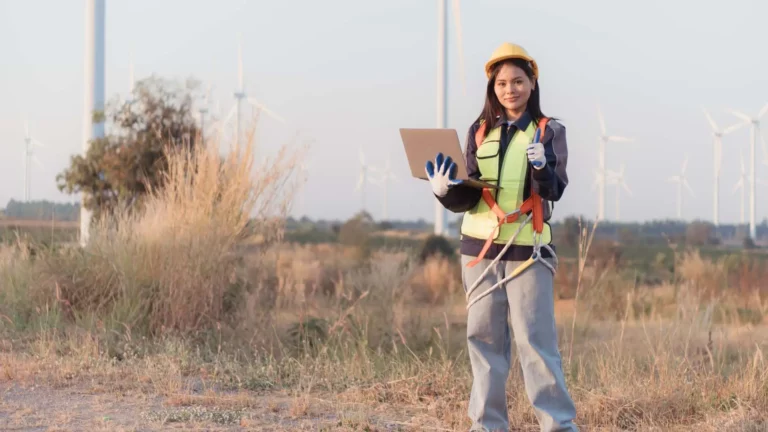Table of Contents
National parks offer some of the most breathtaking views and unforgettable experiences in nature, from towering mountains and lush forests to sandy beaches and flowing rivers. However, many people shy away from visiting these natural wonders because of the perceived high costs — from entry fees to lodging and activities. But the truth is, with some smart planning and insider knowledge, you can enjoy a budget-friendly national park adventure without breaking the bank.
This blog will guide you on how to save money while exploring the beauty of national parks. We’ll cover the best ways to use national park passes, time your trip for the most affordable experience, and enjoy camping — one of the cheapest (and most rewarding) ways to stay close to nature.
Ready to start your affordable national park adventure? Let’s dive in!
Understanding the Costs of National Park Trips
Entry Fees: What to Expect
One of the first things to consider when planning a trip to a national park is the entry fee. These fees can vary widely depending on the park, its popularity, and its location. Typically, entry fees for national parks can range from $10 to $35 per vehicle for a single visit. Some parks, especially popular ones like Yellowstone or Yosemite, charge higher fees because of their high visitation and maintenance costs.
For example, in Yosemite National Park, the entry fee for a 7-day vehicle pass is approximately $35, while Zion National Park charges $30 for a single vehicle. Although the cost might seem steep, it covers the maintenance and preservation of the park’s facilities, trails, and services.
Other Potential Costs: Activities and Lodging
In addition to entry fees, national park trips often incur extra costs, including activities, lodging, and food. These costs can quickly add up if you’re not careful. For example:
- Guided tours: Many parks offer ranger-led programs, which are excellent for learning about the local flora, fauna, and history, but they may incur an additional cost.
- Shuttle services: Some parks, such as Zion or Grand Canyon, offer shuttle services to help visitors explore various points of interest within the park, but these services come with an additional fee.
- Lodging: Depending on where you stay, you may find national park lodging options such as cabins, lodge rooms, or hotels that can cost anywhere from $100 to $500 per night. However, camping is often a much cheaper option and provides an authentic outdoor experience.
In the next section, we’ll explore how to save money on entry fees and lodging, so you don’t have to compromise your experience or budget.
Read: Traveling with Kids on a Budget: Sleep and Snacks Strategy
How to Save on Entry Fees: National Park Passes
The America the Beautiful Pass
One of the best ways to save on national park entry fees is by purchasing the America the Beautiful Pass. This annual pass provides access to over 2,000 federal recreation sites, including all national parks, national forests, and wildlife refuges.
- Cost: The pass costs $80 per year.
- Coverage: It covers entry for up to four people per vehicle, making it ideal for families or groups.
- Savings: If you plan to visit more than one or two national parks, the pass will likely pay for itself. For instance, if you’re planning to visit Yellowstone ($35 entry) and Grand Teton ($35 entry), you’ll already have saved money with the pass.
Additionally, the America the Beautiful Pass can be used for sites beyond national parks, such as recreation areas, national forests, and other outdoor destinations, making it an incredible deal for outdoor enthusiasts.
Senior, Military, and Other Discounted Passes
Did you know there are discounted passes for seniors, military personnel, and individuals with disabilities? These passes provide significant savings for those who qualify.
- Senior Pass: Available for U.S. citizens or permanent residents age 62 and older. The pass costs $80 for a lifetimeof access to national parks and federal lands, including discounted camping fees.
- Military Pass: Free for active-duty military members, veterans, and Gold Star Families. This pass grants free entry to military members and their families to national parks and federal lands.
- Access Pass: Free for U.S. citizens and permanent residents with permanent disabilities. This pass grants free entry to over 2,000 recreation sites.
Free Entrance Days and Promotions
If you’re flexible with your travel dates, take advantage of the National Park Free Days throughout the year. On these days, all national park entry fees are waived. Some of the most common free entrance days include:
- Martin Luther King Jr. Day (January)
- National Park Week (April)
- Veterans Day (November)
These free days allow you to explore the parks without paying entry fees, making it an excellent way to save if your schedule aligns with these dates.
Timing Your Visit: The Best Seasons to Save Money
Off-Season Visits: When to Go for the Best Deals
Visiting national parks during the off-season is one of the best ways to save money. The peak tourist season for many national parks is during summer and holidays, leading to higher prices for everything from lodging to activities.
- Best time to visit: For most parks, the off-season is during the fall or early spring. During these months, parks are generally less crowded, and you’ll find cheaper lodging options, lower costs, and **fewer tourists.
- Example: Visiting Yellowstone in early fall or late spring offers a chance to see the park with fewer crowds and much more affordable camping fees and lodging.
How Off-Peak Visits Save You More
The off-season also comes with the benefit of experiencing more peaceful and serene park visits, where you can enjoy the natural beauty without the noise and hustle of peak season.
- Lodging: Prices for hotels and cabins are typically lower during the off-season. For example, a night at Yosemite Lodge might cost $250 in summer, but during fall or spring, prices may drop by 50%.
- Activities: Many park activities such as ranger-led programs or guided tours are also available at lower pricesduring the off-season. With fewer tourists, you may even have the chance to enjoy personalized tours without the extra cost.
Camping on a Budget: A Low-Cost Alternative to Lodging
National Park Campgrounds: Affordable and Convenient
Camping is one of the most budget-friendly ways to stay in national parks. Most parks offer campgrounds within the park, where you can pitch a tent or rent a campsite for $15-$50 per night (depending on the park and season). Campgrounds often include amenities like fire rings, restrooms, and picnic tables to enhance your experience.
- Example: The Mather Campground in Grand Canyon costs $18 per night during the off-season, offering a more affordable way to experience the park compared to booking a lodge or hotel room.
How to Reserve Campsites and Save Money
Many national park campgrounds require reservations, especially during peak seasons. It’s important to book early if you’re visiting a popular park or traveling during holiday weekends.
- Use Recreation.gov to book campsites online. This website covers most U.S. national parks and offers an easy way to find and book campsites that fit your travel dates and budget.
- Tip: If you’re visiting a park during the off-season, you may find first-come, first-served sites that don’t require a reservation. However, always call ahead or check online to see availability, especially if you’re planning to visit during shoulder seasons.
Free Camping: Where to Camp Without Paying
For those looking to avoid fees completely, some parks allow dispersed camping or backcountry camping, where you can camp outside of established campgrounds for free or at a very low cost.
Dispersed camping is often allowed in national forests or wilderness areas adjacent to national parks. It’s a great option if you’re self-sufficient, enjoy a more rugged experience, and want to avoid crowds. However, these areas typically don’t have amenities like bathrooms or water, so it’s essential to come prepared.
Read: How to Spend on Experiences, Not Just Things: Beem Finance Guide
Maximizing Your National Park Trip on a Budget
Pack Your Own Food and Snacks
Food can be one of the biggest expenses while visiting a national park, especially if you eat at restaurants or buy snacks at park stores. By packing your own meals and snacks, you can save a significant amount of money.
Tip: Prepare simple meals like sandwiches, salads, or trail mix before your trip, and bring a cooler to store perishables. If you’re camping, bring a portable stove or camping gear to cook your meals.
Take Advantage of Free Activities and Tours
Many national parks offer free ranger-led tours, educational programs, or self-guided activities that are included in the entry fee. These experiences offer an opportunity to learn about the park’s history, wildlife, and natural beautywithout additional costs.
Example: Yellowstone’s Old Faithful Visitor Center offers free guided tours that explore the park’s geothermal features. Similarly, Zion National Park offers free shuttle tours to major park points.
Explore Hiking Trails and Free Park Attractions
One of the best ways to experience a national park for free is by hiking. Most parks have well-maintained trails that lead to breathtaking viewpoints, waterfalls, or unique geological features. Hiking is not only free but allows you to fully immerse yourself in the natural beauty of the park.
Tip: Always bring comfortable hiking shoes, a water bottle, and a map. Some of the best trails in national parks are also the most scenic but may require moderate or strenuous hiking.
Must-Visit Budget-Friendly National Parks
Great Smoky Mountains National Park
Known for its lush forests, rolling mist, and abundant wildlife, the Great Smoky Mountains is a top choice for those looking to experience nature without spending much. The park offers free entry and has plenty of affordable campgrounds for visitors.
Tip: Visit the Clingmans Dome for breathtaking mountain views, or take a scenic drive along the Blue Ridge Parkway to enjoy the beauty of the Appalachian region.
Joshua Tree National Park
With its otherworldly landscapes and rock formations, Joshua Tree is a budget-friendly destination for nature lovers. Camping here is affordable, and the park offers plenty of free activities like hiking, rock climbing, and stargazing.
Tip: Jumbo Rocks Campground offers affordable campsites with easy access to iconic Joshua Trees and rock formations.
Acadia National Park
Located on the Maine coast, Acadia National Park offers stunning mountain views, ocean views, and a wide variety of outdoor activities. It’s one of the more affordable national parks, especially if you choose to camp or stay in budget-friendly accommodations.
Tip: Drive or hike to Cadillac Mountain for sunrise — it’s the first place in the U.S. to see the sun each morning!
How Beem’s Budget Planner Can Help You Plan Your National Park Trip
Setting a Travel Budget for National Parks
Beem’s Budget Planner is a great tool for organizing your national park trip expenses. By creating a travel budget, you can set aside funds for camping, entrance fees, food, and activities, ensuring you stay within your limits while having a great time.
Tracking Expenses While You’re On the Road
Once on your national park adventure, Beem helps you track real-time expenses to ensure you don’t exceed your budget. Whether it’s keeping track of gas money, park entry fees, or food costs, Beem’s tools help you stay on top of your finances.
Common Mistakes to Avoid on a Budget National Park Trip
Overlooking Campground Reservations
Avoid disappointment by booking campgrounds early, especially during peak seasons. National parks often fill up quickly during holidays and weekends, so plan ahead.
Forgetting to Pack Essentials
Avoid overpaying for items at the park by ensuring you pack all your essentials before heading out. From snacks to hiking gear, planning ahead can save you money.
Ignoring Free Opportunities
Many parks offer free activities that are often overlooked. Ranger programs, self-guided tours, and hiking offer ample opportunities to enjoy the park without additional costs.
Also Read: The Easiest Ways to Track Daily Spending: A Comprehensive, Actionable Guide
FAQs on Cheap National Park Trips: Passes, Timing, and Camping
1. How can I save on entry fees for national parks?
Using the America the Beautiful Pass is one of the best ways to save on entry fees. The pass provides access to over 2,000 federal recreation sites for $80 a year, making it a great deal for frequent visitors.
2. What is the best time to visit national parks for fewer crowds and lower costs?
The off-season is typically the best time to visit. Plan for early spring or fall, when entry fees and lodging costs are generally lower, and the parks are less crowded.
3. Are there any discounts for national park entry for seniors or military personnel?
Yes! Seniors, military members, and individuals with disabilities can access discounted passes or free entry to national parks. The Senior Pass offers lifetime entry for only $80.
4. Can I camp for free in national parks?
While not all national parks offer free camping, many parks provide dispersed camping in national forests or backcountry areas, which is either free or available for a low fee.
5. How can Beem help me budget for my national park trip?
Beem’s Budget Planner allows you to track your national park trip expenses, set aside money for activities and lodging, and ensure you stay within your financial limits while enjoying your trip.
Conclusion
National parks offer some of the most stunning and accessible outdoor experiences — proving that adventure doesn’t have to come with a high price tag. Whether you’re exploring iconic trails, camping under the stars, or discovering hidden gems off the beaten path, smart planning helps you enjoy nature’s best without overspending. Choosing annual or group passes, visiting during off-peak seasons, and cooking your own meals can significantly reduce your costs while maintaining an authentic experience.
To make your outdoor escape even more budget-friendly, use Beem’s Budget Planner to track park fees, fuel costs, gear purchases, and food expenses in one place. If an unexpected expense arises — like a car repair on the road or a last-minute campsite upgrade — Beem Everdraft™ gives you instant cash access up to $1,000 with no credit checks or interest, ensuring your adventure continues uninterrupted.
Plus, Beem’s Smart Wallet and Cashflow AI help you manage day-to-day spending efficiently, while Job Loss Protect™ adds a layer of financial security that keeps your travel plans safe no matter what life brings.
Make your next national park trip unforgettable and financially stress-free — download the Beem app today to plan smarter, spend wiser, and explore more.















































